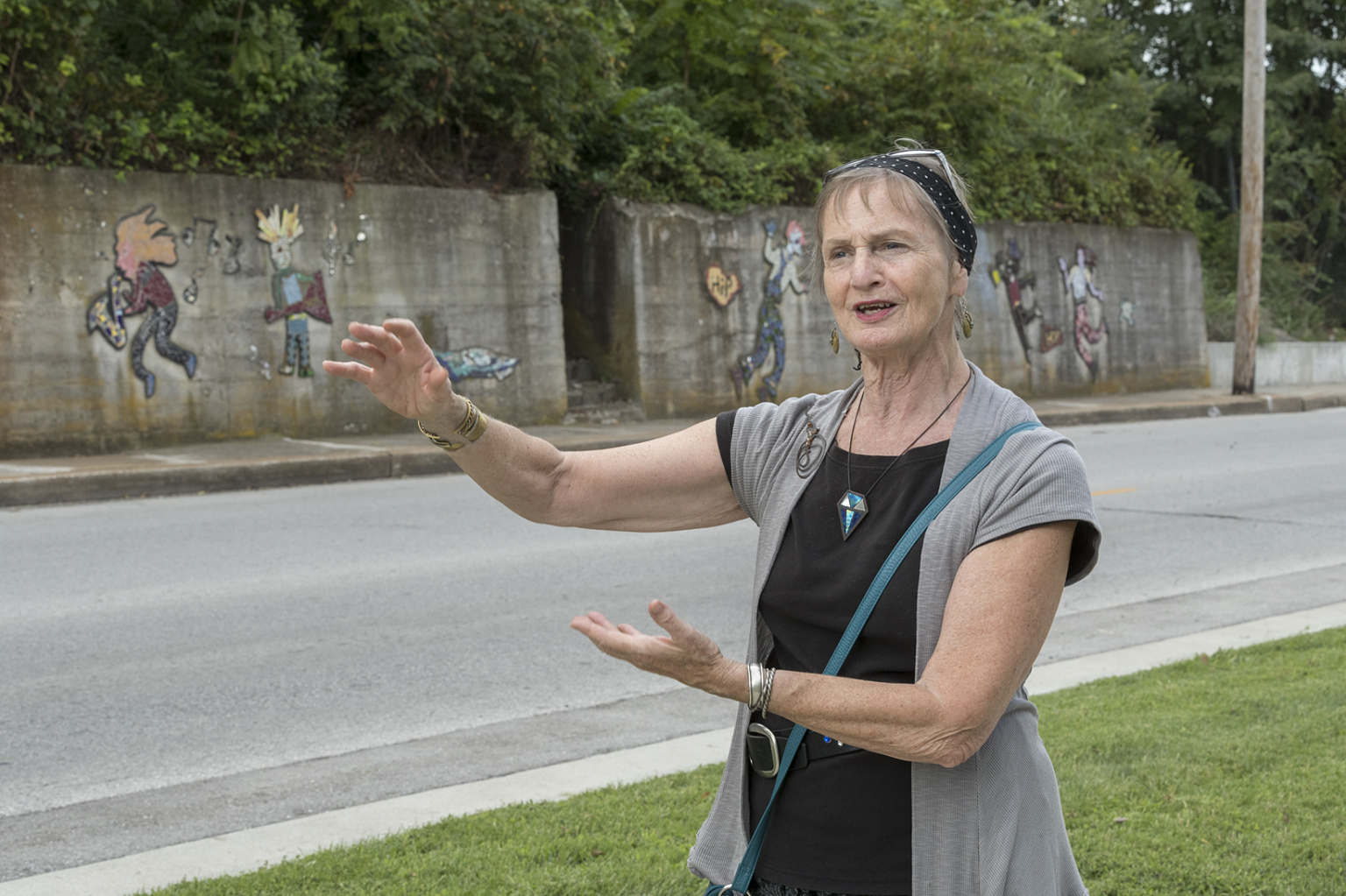A mosaic is a metaphor, says artist Christine Schilling.
“I love the symbolism that a mosaic is many small pieces that add up to one great story. That is a real metaphor for life. Every little colorful piece among us has a role to play. You take one out and something is missing. They can’t all be the same color, size or texture or it doesn’t work. A mosaic is a community of different shapes and colors, just like a community, a school, a city,” she said.
Schilling is the artist behind the mosaic mural on College Street which was installed 16 years ago and pays homage to Springfield’s history. The piece of art stretches 600 feet on a wall near where the city’s first cabin was erected by William Fulbright in 1830. The mural celebrates Route 66, as well as the evolution of College Street.
It was pieced together over three years with the assistance of 2,000 children and community members.
The concept for the public art installation came from Stan Adam and Carol Ward who were dating at the time.
“I lived in the neighborhood and there was always graffiti on the wall and it drove me crazy. I thought maybe we could reach out to juveniles, because they were the ones responsible for the graffiti, and teach them a skill and maybe they would take pride and ownership in the wall,” said Ward.
So Adam and Ward contacted Christine Schilling about teaching children who were at risk or already in trouble to create the mosaic. The idea was to channel that energy into something positive for the neighborhood.
The Probation and Parole division in Springfield was incredibly supportive of the project, as were many organizations in town that worked with at-risk youth. Schilling partnered with Campbell Elementary and worked with 5th grade students. Educators wove science and history curriculum into the project and there was “wonderful collaboration” with the school, Schilling said.
Other organizations involved were Bailey Alternative School, Girl Scout Troops, Missouri Arts Council, Boys and Girls Town, Solutions, Division of Youth Services, the City of Springfield, Community Partnership of the Ozarks, Boys & Girls Clubs, to name a few.
It was made possible through various donations and grants.
The wall represents the history of College Street as seen through the eyes of kids, said Schilling.
“As the idea evolved we developed other angles,” said Schilling. “We started way back when there was nothing but animals. On one end, it is early days. Then it goes along Jordan Creek, it became a science lesson. Then it became transportation- we looked at the history of transportation on College Street from canoes to railroad to BMX bikes. You have the young people today on their skateboards and bikes. The history of who lives there when it was Indians, settlers, contemporary people. We go from early structures to gradually coming into modern day times with hip hop, young people doing things like skate boarding.”
As children learned about the animals native to Jordan Creek, the students created fish, lizards, crawdads. They learned about Native Americans, and Springfield’s early settlers.
As the mural crosses into modern life, there are buildings significant to Springfield such as Hammons Tower and the Heer’s Building.
Aside from the educational aspect, it gave children a sense of responsibility, ownership, and contribution, said Schilling.
The students would create the art, but Schilling and other adults would piece it together on the wall.
Now 16 years later, Schilling frequently meets adults who as children helped work on the project and come up to her and tell her they designed a wheel or another aspect of the piece.
“I know for a fact people who were children then are now bringing their children here to see the wall,” the artist said.
Parts of the mosaic have deteriorated over time and Schilling would like to revive it. The mural was dedicated in September, 2001.
“She just turned 16, let’s throw her a Sweet 16 and sparkle it up. It won’t take much, volunteers, a little money, and commitment. It’s delightful and needs a little fine tuning,” she said, standing in front of the wall.
Schilling has a studio on Commercial Street. She has completed a variety of mosaics around the Ozarks.
“It appeals to people because this piece is going to last long after you are. You can’t deface it easily. They are municipal friendly and durable,” Schilling said. “A mosaic is a community.”
While the mosaic is weathered, it still stands as an investment in a neighborhood and in a community.
“These kids put so much time and effort into it and were really proud of it,” said Ward. “It means a lot to a lot of people.”


